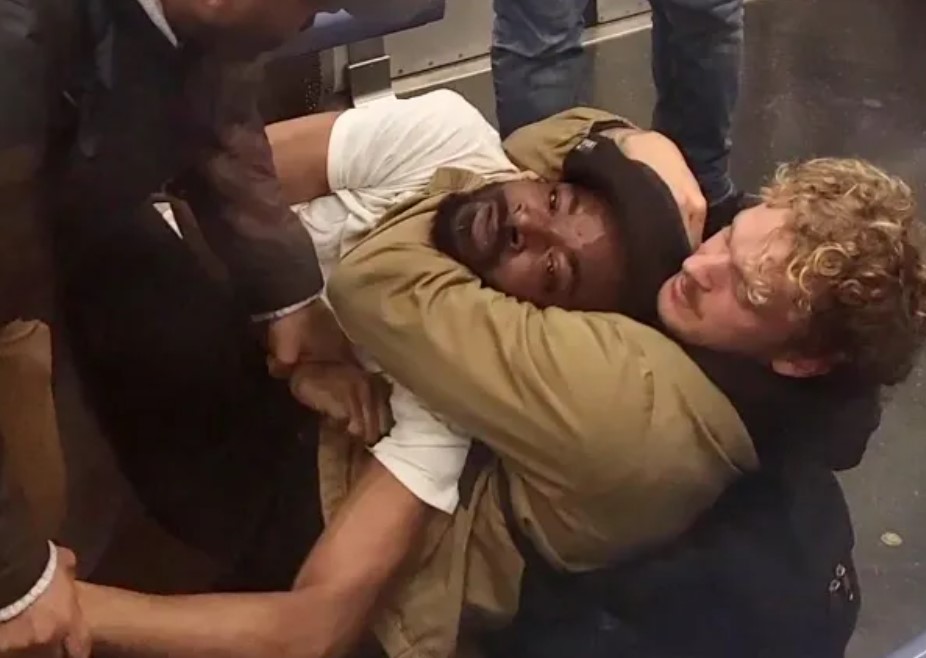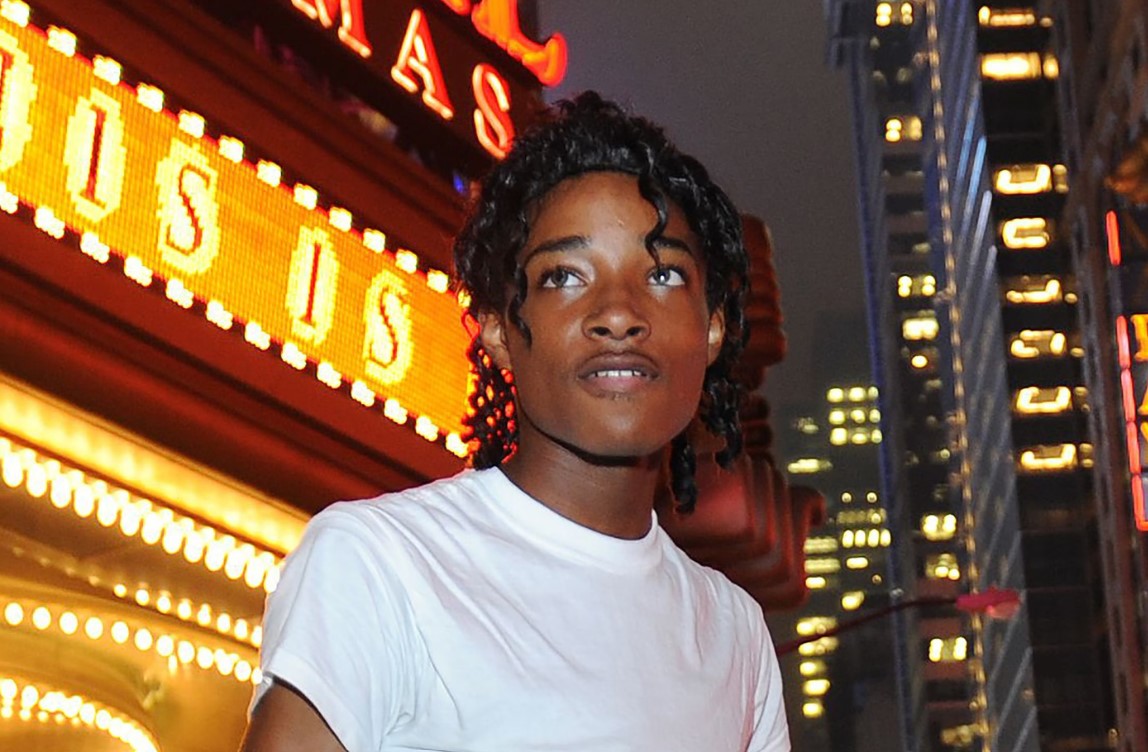Daniel Penny Subway Video and Jordan Neely Subway Incident
On May 1, 2023, a seemingly ordinary subway ride on New York City’s F train spiraled into a tragic confrontation with lasting societal implications. Jordan Neely, a 30-year-old homeless black man struggling with schizophrenia, and Daniel Penny, a 24-year-old white former Marine, became the central figures in an incident that would not just alter their lives, but also ignite intense public and legal debates. Neely, in a state of distress, loudly expressed his desperation and hunger, making alarming statements about his readiness to die and willingness to harm others. His behavior, rooted in his mental health struggles and exacerbated by his socioeconomic condition, unsettled the passengers aboard the train.
Daniel Penny’s response to Neely’s outburst physically restraining him in a hold for six minutes resulted in Neely’s untimely death from neck compression, as later declared by medical professionals. This act propelled Penny into the center of a legal maelanstrom, facing charges of second-degree manslaughter and criminally negligent homicide. The trial, set against the backdrop of Manhattan’s courthouses, transcends the immediate legal questions and delves into deeper issues plaguing American society.
The case of Penny and Neely not only highlights the intersection of race, mental health, and homelessness but also serves as a mirror reflecting America’s ongoing struggle with racial and social divides. As the legal proceedings unfold, they continue to evoke widespread debate about justice, equity, and the appropriate response to mental health crises in public spaces, resonating with national concerns over safety, race, and human dignity.
Content
The Incident and Video
On the afternoon of May 1, 2023, the usual hum of New York City’s F train was pierced by an escalating disturbance. Jordan Neely, visibly agitated and vocal about his desperate state, entered the subway carriage. Witnesses recount him shouting about his hunger and voicing distressing statements such as being “ready to die” and willing to “kill a motherfucker.” His unsettling behavior immediately put the passengers on edge, creating a palpable tension that filled the subway car.
Part 1
Part 2
Among the riders was Daniel Penny, a 24-year-old former Marine, whose reaction to Neely’s outbursts would have fatal consequences. Observing Neely’s erratic behavior and perceiving a potential threat, Penny decided to intervene. According to various passenger accounts, there was no physical aggression from Neely towards anyone before Penny’s intervention. Penny approached Neely and put him in a restraining hold a maneuver he maintained for approximately six minutes. Throughout this ordeal, other passengers either looked on helplessly or exited the train at subsequent stops, while some filmed the incident on their phones.
Eyewitnesses provided mixed reactions in the immediate aftermath. Some praised Penny for his quick action, interpreting it as a measure to protect himself and others from what they perceived as a potential threat. Others criticized his decision, viewing it as an excessive response to a man who, despite his threatening words, had not engaged in physical violence. The incident quickly sparked widespread public debate, with people taking to social media to voice their opinions, often reflecting broader societal divides over race and homelessness.
The Aftermath
The confrontation ended tragically with Neely’s unresponsive body being rushed to the hospital, where he was soon declared dead. The medical examiner’s office later confirmed that the cause of death was compression of the neck. In the immediate aftermath, Daniel Penny went to a police precinct to give his statement, which set the stage for the legal proceedings to follow.
Penny was charged with second-degree manslaughter and criminally negligent homicide. These charges are serious, reflecting allegations that Penny recklessly caused Neely’s death through his actions. Under New York State law, second-degree manslaughter involves recklessly causing the death of another person, which carries a penalty of up to 15 years in prison. Criminally negligent homicide, involving death caused by failing to perceive a substantial and unjustifiable risk, carries a lesser penalty but still significant, up to four years in prison.
The legal process has been closely watched, with the case becoming a focal point for discussions on vigilantism, racial justice, and the treatment of vulnerable populations in urban settings. Legal experts and community leaders have weighed in, some arguing that Penny’s military background might have influenced his decision to physically restrain Neely, while others point to a societal failure in addressing mental health and homelessness effectively.
As Penny’s trial approaches, the public and media scrutiny intensifies, signaling the case’s broader implications for New York City’s social fabric. The incident has not only highlighted the personal tragedy of Jordan Neely and the consequential actions of Daniel Penny but also underscored the ongoing challenges facing the city in terms of race relations, public safety, and social justice. The outcome of this trial could potentially influence public policy and societal attitudes towards similar incidents in the future.
Broader Context
The tragic encounter between Jordan Neely and Daniel Penny on the F train brings to the forefront several pressing societal issues, most notably homelessness, mental health, and racial tensions in urban settings. Neely’s known battle with schizophrenia and his homeless status underscore the often overlooked plight of many individuals living on the streets of cities like New York. This case vividly illustrates the critical gaps in the support systems intended to assist those with mental health challenges, especially within minority communities.
Homelessness not only deprives individuals of physical shelter but often denies them access to essential mental health services. The visibility of Neely’s mental health crisis in such a public forum as the subway system highlights the everyday realities that go unnoticed or are avoided by the broader public. This incident serves as a painful reminder of the urgent need for comprehensive policies that address mental health care and housing as interconnected crises.
Furthermore, the racial dynamics of the case cannot be overlooked. The fact that Neely was a black man and Penny a white former Marine adds a layer of complexity to public perceptions of the incident. Historically, racial biases have influenced the treatment of individuals in similar crises, with non-white individuals often receiving harsher judgments or less sympathetic responses. This case thus acts as a litmus test for New York City’s handling of racial issues within its law enforcement and justice systems, reflecting broader national struggles with race and policing.
Public safety concerns are also at the heart of this discussion. The fear and tension experienced by the passengers on the F train reflect a broader anxiety about safety in public spaces, particularly in urban transit systems. This incident raises questions about the balance between individual actions in response to perceived threats and the role of official bodies, like the police, in maintaining order and safety.
The Trial
As the trial of Daniel Penny progresses, it has become a focal point for legal and societal debates. The key arguments from the prosecution hinge on the assertion that Penny’s actions were reckless and not justified by the circumstances. They argue that Neely, despite his verbal outbursts, did not physically threaten anyone on the train, and thus Penny’s decision to restrain him with a potentially lethal hold was excessive and unwarranted.
The defense, however, presents a different narrative. They contend that Penny acted out of a perceived necessity to protect himself and other passengers from what he interpreted as a credible threat. They emphasize his background as a Marine, suggesting that his training led him to take control of the situation in a manner he deemed most effective to prevent potential harm.
Central to the case is the video footage captured by bystanders and police body cameras, which has been meticulously analyzed in court. This evidence is critical as it provides a moment-by-moment breakdown of the events as they unfolded. The jury’s interpretation of this footage is pivotal in determining the outcome of the trial. Witness testimonies have also played a significant role, with various passengers providing differing accounts of the fear and confusion during the incident.
The trial not only seeks to establish the legality of Penny’s actions but also touches on broader legal and ethical questions about civilian intervention in crisis situations. The implications of the verdict extend beyond the individuals involved, potentially affecting public policy on how such incidents should be handled in the future and the training given to both civilians and law enforcement officers in dealing with mental health crises in public spaces.
As the trial is expected to conclude soon, all eyes are on the courtroom as it promises to set precedents in how justice is served in complex cases involving mental health issues, racial dynamics, and public safety.
Media and Public Response
The trial of Daniel Penny has attracted widespread media attention, highlighting the significant role that journalists and the public play in shaping the narrative and potentially influencing the outcome of highly charged legal cases. Video journalists Tanya Lukyanova and Jana Kozlowski have been pivotal in documenting the unfolding events, providing the public with comprehensive visual accounts that have brought a rare transparency to the proceedings. Their work has included not only capturing the courtroom dynamics but also compiling footage from the scene and interviews with key stakeholders, thus enriching the public’s understanding of the complex issues at play.
Media coverage has varied widely, with some outlets focusing on the racial and socioeconomic disparities highlighted by the case, while others have portrayed Penny as either a vigilante or a hero. This dichotomy in reporting reflects the polarized views of the public. On social media and opinion columns, debates rage over the appropriateness of Penny’s actions, with some arguing that he took necessary action in a dangerous situation, and others condemning his response as an overreach influenced by racial bias.
The public’s response has also been influenced by editorial decisions, such as the emphasis on Neely’s mental health and homeless status, which some perceive as an attempt to invoke sympathy or justify Penny’s actions. The narrative framing by media outlets thus plays a crucial role in shaping public opinion, demonstrating the power of media in constructing societal discourse around justice and morality.
In-Depth Analysis
The video evidence presented in the trial has been a cornerstone of both the prosecution’s and defense’s arguments. Frame-by-frame analysis of footage from police body cameras and bystander phones has provided the jury and the public with a detailed account of the incident. This analysis has revealed the nuances of Neely’s behavior and Penny’s response, allowing for a deeper understanding of the events that unfolded.
The impact of this video evidence on the trial has been significant, as visual accounts often carry more weight than verbal testimony alone. The videos have allowed the jurors to witness the incident firsthand, potentially reducing reliance on the sometimes conflicting testimonies of eyewitnesses. For the public, these videos have served as a basis for forming opinions about the incident, highlighting how crucial digital evidence has become in the modern judicial process.
Public perception has been notably affected by this evidence, with some viewers feeling that the videos clearly justify Penny’s fears and actions, while others see them as proof of an unnecessary and deadly overreaction. The ability of video evidence to be interpreted in multiple ways has added a layer of complexity to the trial, influencing ongoing debates about race, justice, and the appropriate response to perceived threats.
The trial of Daniel Penny, stemming from the tragic death of Jordan Neely, serves as a microcosm of larger societal issues such as race, justice, and public safety. As the case concludes, its implications extend far beyond the future of the individuals directly involved. This trial challenges us to reflect on how society addresses mental health crises, responds to threats, and navigates the delicate balance between individual actions and societal norms.
The outcome may prompt legislative and policy changes, particularly in how law enforcement and public services manage interactions with individuals experiencing mental health crises. Moreover, this case could influence public perceptions of race and justice in America, potentially catalyzing movements for reform in areas ranging from police training to community support structures.
As the community and the nation reflect on this case, the lessons learned could lead to significant societal shifts, hopefully paving the way for a more just and empathetic approach to similar crises in the future.
Daily Hot News -Luigi Mangione YouTube Video and The Truth Behind It
Stephanie Watson Video Leak and Its Aftermath
Sehar Anjum Video Incident and Responses
Sadie McKenna Video Leak and Legal Response
Ocean Pabon Video Viral Incident on Privacy and Digital Ethics
Juliana Duque Video Viral Leak and Exploring the Impact
Brian Thompson Shooting Video and Its Reverberations



